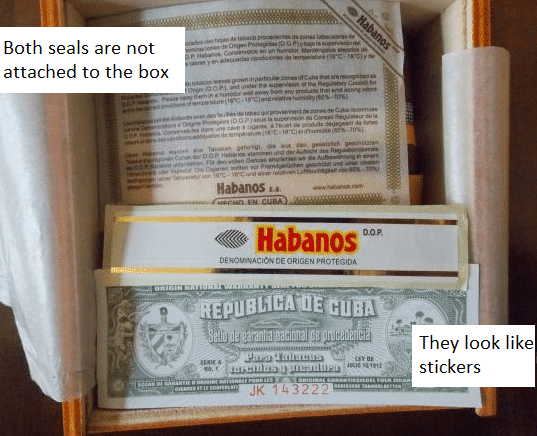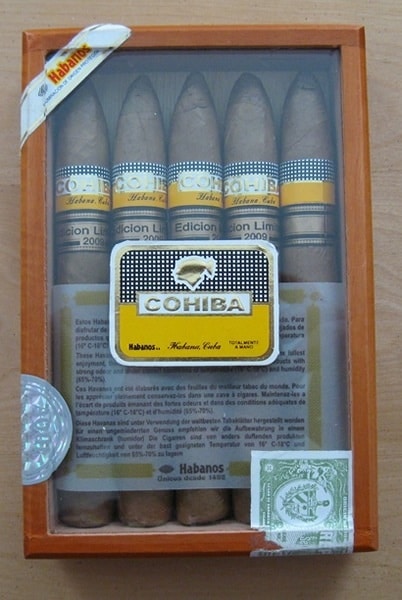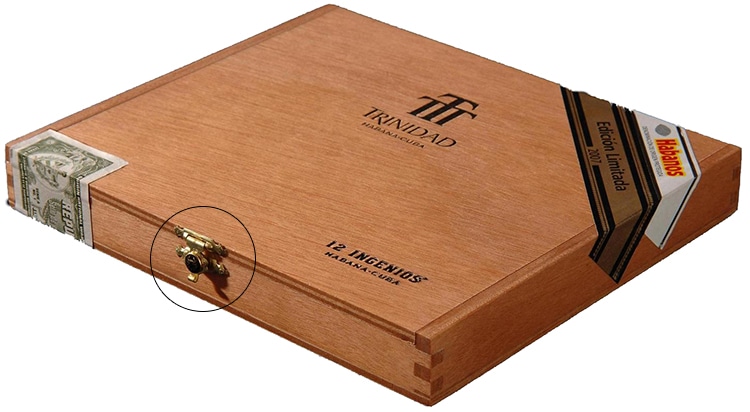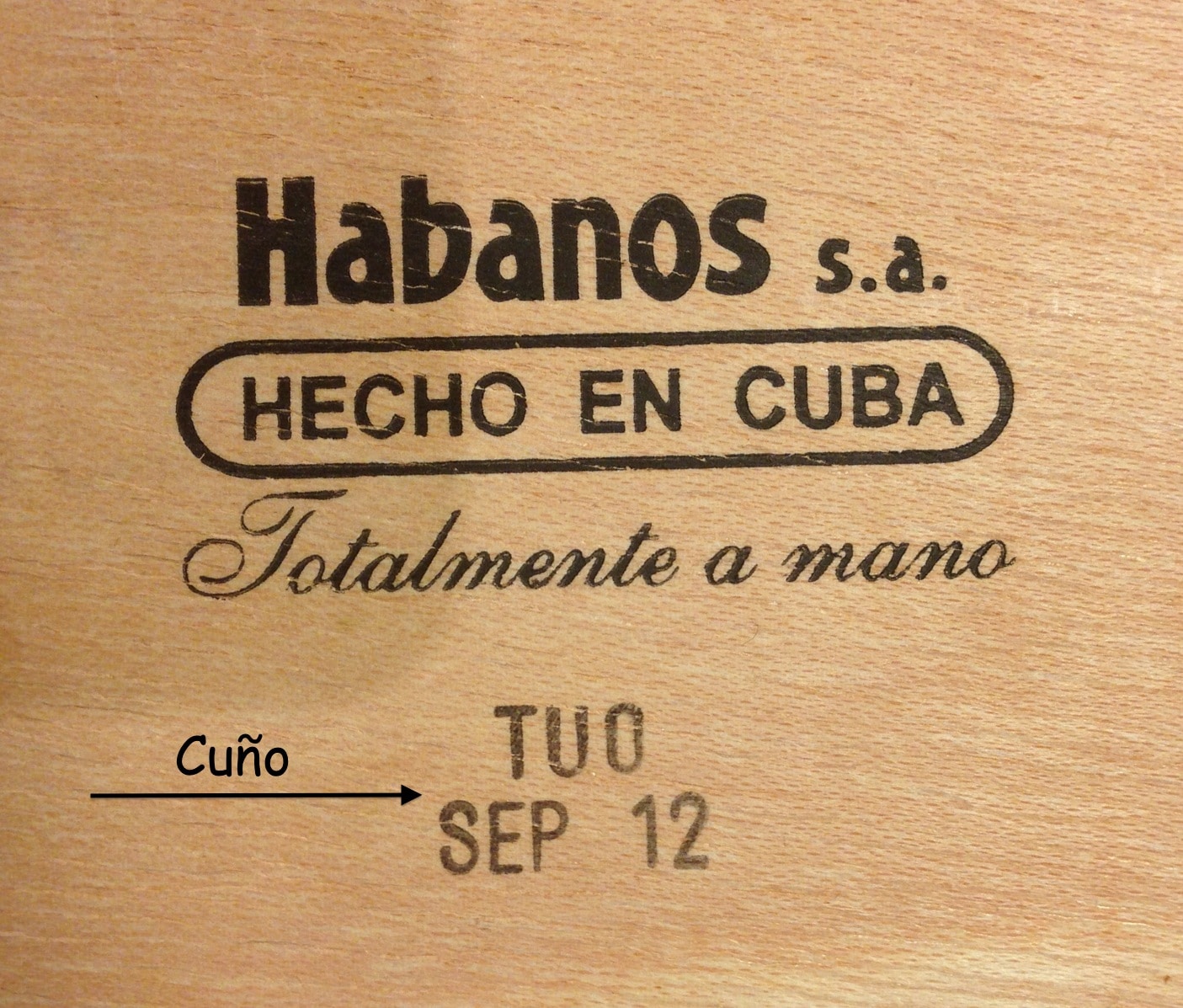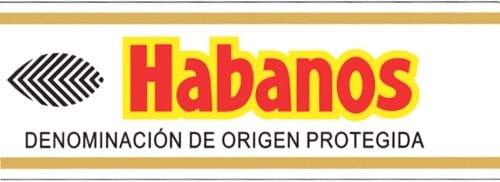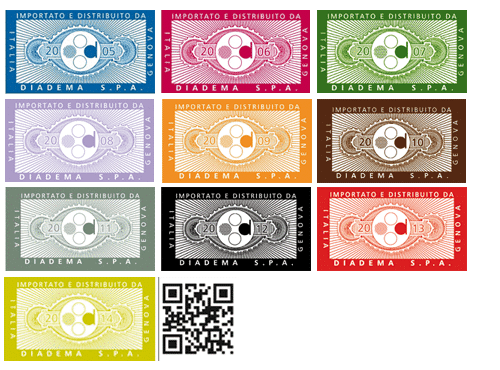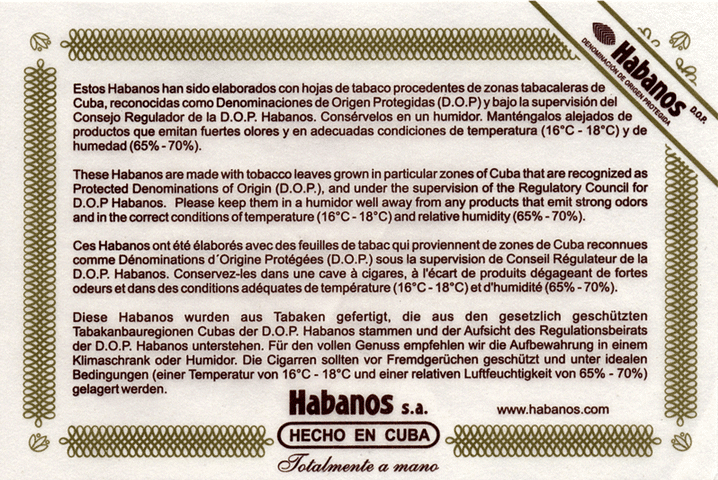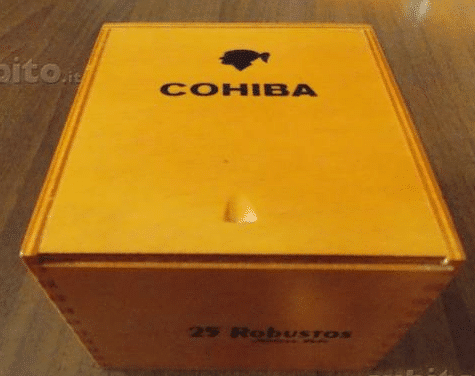In most of the cases, finding counterfeit Cuban cigars is very simple. If you go to websites where people sell items, you will will find plenty of them. Let’s sat that 90% of the listed Cuban cigars are fakes. It is a good starting point to quickly understand how the counterfeit cigar boxes look like.
This steps below can be followed to understand if you are dealing with a counterfeit product:
1. Price
2. Box type
3. Cuños
4. External seals
5. Internal seals
6. Cigar documents
7. Smell
8. Visual analysis
9. Touch
10. Cigar test
11. Cigar cut
12. Fake Cuban cigars images
1. PRICE
Like all things, Cuban cigars have a production cost. Even if you buy them in Cuba (where you pay about 35-40% less than retail price), nobody will ever be able to offer them at a bargain price. Unless, of course, they’re selling us fakes.
Here is an example to better understand the thing. One of the most counterfeit cigars in the world are the Cohiba Esplendidos, due to its value and fame. Currently, this cigar is sold for more than $ 30. In Cuba it is around $ 20. That said, a box of 25 Esplendidos has a retails price of around $ 750 (in Cuba $ 500). If someone is trying to sell this box in your country for $ 100-200, or you fnid people selling it for $ 50 in Cuba (sellers on the street), the situation is quite clear: in both cases, an alarm must sound in your mind. It is unlikely that someone will decide to sell off cigars at their own expense.
So if the box of cigars we are about to buy looks like a crazy bargain, there is probably something wrong. So it is good to go deeper into checking the box and the cigars, to make sure you don’t buy fakes. So let’s see what other checks we can do.
2. BOX TYPE
The type of box gives us important information on whether cigars are fake or not. There are 3 things to discuss about this topic:
1) very often fakes are sold in wooden boxex with a glass/plexiglass cover. These boxes often carry the Cohiba brand. There are no cuban boxes with glass or plexiglass covers. If we are facing one of these boxes, we are facing a 100% counterfeit product. Here is an example.
2) even the color of the box can give us precious informations. Cohiba boxes are lacquered on the outside, and therefore we are in front of an unlaqured box of Cohiba, unless it has been made for particular editions, we are facing a fake.
3) opening mechanism on box: some boxes have a mechanism that allows you to firmly close the box. This mechanism always comes with a logo on top. In counterfeit boxes, this usually has an incorrect print of this logo. The fake logo looks like it has been made in a very rudimentary and not detailed way. It often look like it has been badly printed.
3. CUÑO
Cuño is a stamp that is usually on the bottom of the box.
As can be seen from the picture above, it is made up of codes.
If the cigar box was produced after 1985, it must have the Cuño written somewhere (on the box or on the container in which the box was placed, like the carton paper for some Cohiba boxes, like the Maduro 5). The lack of Cuño or if it features wrong codes, are in fact a very valid method to understand if the box is counterfeit. In fact, many boxes have Cuños with too many codes, or they do not have the Cuño at all. This verification is one of the most accurate, and in many cases we will realize that the box is counterfeit precisely from this.
For more specific information regarding the Cuño, concerning the codes, the different types of Cuño and how to decode this stamp and understand if it was affixed in the wrong way: GUIDE TO HOW TO READ THE CUÑO.
4. EXTERNAL SEALSCuban cigars boxes come with two seals: the DOP seals and the Cuban state seal. If the box is bought outside Cuba, we can also find the importer seal.
4.1 HABANOS S.A. SEAL
This seal is applied to the top right of the box, and is affixed before the box leaves the factory. If illuminated with ultraviolet light, it get phosphorescent.
It was introduced in 1994 and has been changed 3 times.
The first type of seal was used from 1994 to 2004. It only features the “HABANOS” written.
The second type was used from 2005 until 2008/2009, and in addition to the “HABANOS” written it also has the words “DENOMINACION DE ORIGINE PROTEGIDA”.
4.2 CUBAN SEAL STATE – WARRANTY
Starting from 1999, the warranty seal introduced new features. A serial code was added to the seal and the seal itself has a reaction if directly exposed to ultraviolet light. In fact, by illiminating it with UV rays, the coat of arms of Cuba will appear in its central part (the same coat of arms that can be seen on the seal with normal light, the one on the left side of the seal.
Since 2009, there has been a further change to ensure greater security. Indeed, a hologram has been introduced to the seal. On the right side of the seal, there is a small strip that has an hologram across its entire width. Furthermore, the serial code is no longer placed in the lower and central part of the seal, but it is now on the left, parallel to and opposite to the hologram.
This new seal was introduced starting in 2009, but the introduction was gradual. In some boxes made in those years there is no hologram, or in some cases, there are two seals affixed to each other (in this case the new seal with hologram has been placed over on top of the old seal).
4.3 IMPORTER SEAL
This is a seal that is usually affixed by the company importing cigars in a country. Follows an example of them
5. INTERNAL SEAL
Usually there are seals placed inside the box. These seals must be attached to the box and not simply inserted into it on adhesive paper. In counterfeit Cohiba boxes, this error is almost always made. (See pictures at the bottom of the page).
6. CIGAR DOCUMENTATION
A documentation must be present in the boxes. This documentation varies from box to box, depending on whether the box belongs to the normal production or to limited editions, regional editions or other not ordinary series.
What must always be there is a small piece of paper written on transparent tissue paper showing the correct method of preservation. This sheet is written in 4 languages: Spanish, English, French, German.
1. in 2005 the English text was slightly modified: a space was added after the indication on the storage temperature of the cigars.
2. in 2007 the writing in French and German was modified to correct the errors that were there.
3. in 2012 an inscription was added bearing the “DOP” seal. This writing was placed, exactly as it happens on the boxes, at the top right of the sheet.The dimensions of the leaflet are:
length: 104mm (4.1″)
width: 69mm (2.7″)
7. SCENT
The scent coming from a cigar box must be intense and rich. Obviously the scent your are looking for must be the tobacco one. If we get smells that don’t remind us too much of tobacco, we could be faced with fakes that have been filled with banana leaves!
8. VISUAL ANALYSIS
Visual analysis consists of 2 parts.
The first concerns the analysis of the band, if it is present (very old cigars may not have a band).
The second is an analysis of the head and the foot of the cigar.
8.1 The band: it must be verified that the band used has no defects. Defects can be a band that appears to be ruined or worn: used bands are always controlled. Bands that are not perfect are not used in genuine cigars making. This is a strong sign of counterfeiting.
8.2 Cigar Analysis: the wrapper must be a quality one; it doesn’t have to be shriveled or ugly. Usually the counterfeit cigars are copies of the most expensive Cuban cigars, and the real ones, are made with a higher level of control. If we are facing some Cohiba, the head must have the triple cap finish. If this is not the situation in front of you, you are facing cigars stored in a really bad way or fakes.
Also the cigar foot can be checked and it can give us very important information as well. This check is performed simultaneously the touch analysis (next chapter). Looking at the foot of the cigar, you can immediately notice how it has been filled. If the cigar has “holes” or in any case insufficient filling, this can be another alarm”.
9. TOUCH ANALYSIS
Touching and squeezing gently the cigar, you can notice if the construction is good or has some defects. In counterfeit cigars, filling is usually very low. This makes the cigars feel very soft to the touch. An poor filling is a very good sigh of fake cigars.
10. SMOKE THE CIGAR
This test is useful only if you know the type of cigars you wanna check on. If you have already smoked the same type of cigar, you will be able to understand if the aromas and strength developed during the smoke are typical of the brand and in particular of that type of cigar.
Otherwise this analysis will be useful only to get a feedback on the quality of the tobacco used, long story short, if the cigar is good or not. Not all fake cigars deliver a bad smoke indeed! In the past we came across counterfeit Montecristo No.2 and, although the aromatic bouquet was very different from that of the genuine No.2, cigars were not bad at all!
11. CIGAR CUT (CUT OPEN THE CIGAR AND LEAVES CHECK)
This is the last analysis that can be performed and it is also an invasive type of analysis. Let’s say that it is the last step, the one left to be performed when you are almost certain that the cigars are fakes. This helps you checking their filling.
The first two things that are noticed when opening the cigar are:
1. type of leaves present
2. leaf size.
1. By the type of leaves present we mean if the filler (or tripa) of the cigar is made from tobacco leaves. In some cases, in fact, counterfeiters use diffent leaves.
2. As for the size of the leaves, we are referring to the dimensions that the tobacco leaves have. Quality cigars are “tripa larga”, which means they have been made with whole tobacco leaves. By cutting the cigar open and unrolling the leaves, it will be fairly simple to see if the leaves used are whole or not. Shorter leaves will always be present, since during construction the leaves are also broken and the shorter parts are used to ensure that the cigar has a homogeneous filling. That said, most leaves will still have to be long as the cigar length.
12. FAKE CIGAR BOXES
Image 1: the color of the box is different from the standard color of Cohiba. Furthermore, the seals are missing.
Image 2:
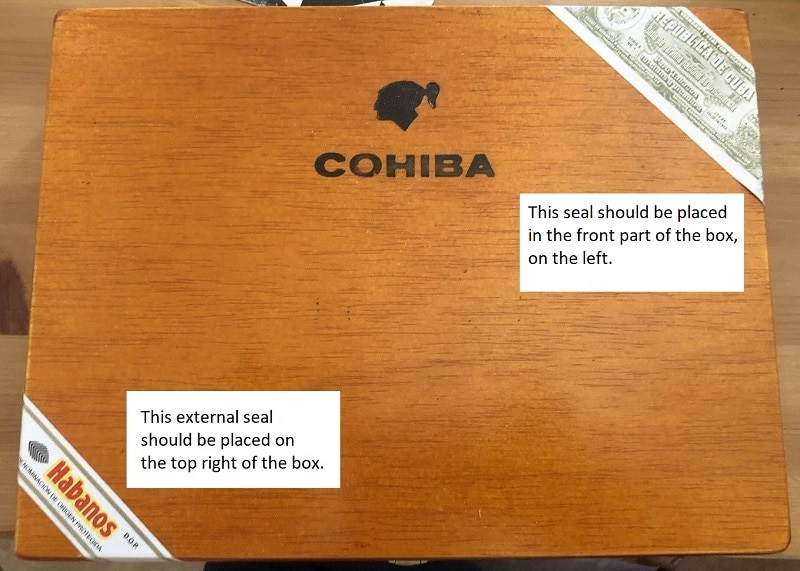
Image 3, the cuño is incomplete:
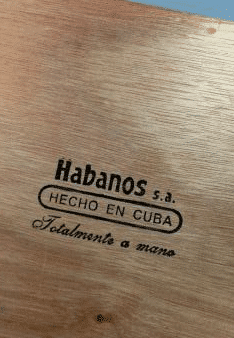
Image 4:
